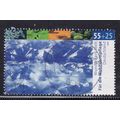Morris, William - Wey - printed cotton - art postcard
- Condition : Used
- Dispatch : 2 Days
- Brand : None
- ID# : 74817802
- Quantity : 1 item
- Views : 427
- Location : United Kingdom

- Seller : justthebook (+1703)
- Barcode : None
- Start : Sun 09 Sep 2012 12:45:58 (BST)
- Close : Run Until Sold
- Remain : Run Until Sold
More Listings from This Seller view all
Seller's Description
- Art Postcard
- Work of art title: Wey (c.1883)
- Artist (if known): William Morris (1834-1896)
- Media or other details: printed cotton
- Publisher / Gallery: Birmingham Museum and Art Gallery, c.1990s
- Postally used: no
- Stamp & postmark details (if relevant): na
- Size: modern
- Notes & condition details:
NOTES:
Size: 'Modern' is usually around 6in x 4in / 'Old Standard' is usually around 5 1/2in x 3 1/2in. Larger sizes mentioned, but if you need to know the exact size please ask.
All postcards are not totally new and are pre-owned. It's inevitable that older cards may show signs of ageing and use, particularly sent through the post. Any faults other than normal ageing are noted.
Stock No.: A412
------------------------------------------------
Postage & Packing:
UK (incl. IOM, CI & BFPO): 99p
Europe: GBP 1.60
Rest of world (inc. USA etc): GBP 2.75
No additional charges for more than one postcard. You can buy as many postcards from me as you like and you will just pay the fee above once. (If buying postcards with other things such as books, please contact or wait for invoice before paying).
Payment Methods:
UK - PayPal, Cheque (from UK bank) or postal order
Outside UK: PayPal only please (unless otherwise indicated). NO non-UK currency checks or money orders (sorry).
NOTE: All postcards are sent in brand new stiffened envelopes which I have bought for the task. These are specially made to protect postcards and you may be able to re-use them. In addition there are other costs to sending so the above charge is not just for the stamp!
----------------------------------------------
Text from the free encyclopedia WIKIPEDIA may appear below to give a little background information:
*************
William Morris (24 March 1834 � 3 October 1896) was an English textile designer, artist, writer, and libertarian socialist associated with the Pre-Raphaelite Brotherhood and the English Arts and Crafts Movement. He founded a design firm in partnership with the artist Edward Burne-Jones, and the poet and artist Dante Gabriel Rossetti which profoundly influenced the decoration of churches and houses into the early 20th century. As an author, illustrator and medievalist, he helped to establish the modern fantasy genre, and was a direct influence on postwar authors such as J. R. R. Tolkien. He was also a major contributor to reviving traditional textile arts and methods of production, and one of the founders of the Society for the Protection of Ancient Buildings, now a statutory element in the preservation of historic buildings in the UK.
Morris wrote and published poetry, fiction, and translations of ancient and medieval texts throughout his life. His best-known works include The Defence of Guenevere and Other Poems (1858), The Earthly Paradise (1868�1870), A Dream of John Ball (1888), the utopian News from Nowhere (1890), and the fantasy romance The Well at the World's End (1896). He was an important figure in the emergence of socialism in Britain, founding the Socialist League in 1884, but breaking with that organization over goals and methods by the end of the decade. He devoted much of the rest of his life to the Kelmscott Press, which he founded in 1891. Kelmscott was devoted to the publishing of limited-edition, illuminated-style print books. The 1896 Kelmscott edition of the Works of Geoffrey Chaucer is considered a masterpiece of book design.
....
Furnishing textiles were an important offering of the firm in all its incarnations. By 1883, Morris wrote ""Almost all the designs we use for surface decoration, wallpapers, textiles, and the like, I design myself. I have had to learn the theory and to some extent the practice of weaving, dyeing and textile printing: all of which I must admit has given me and still gives me a great deal of enjoyment.""[40]
Morris's preference for flat use of line and colour and abhorrence of ""realistic"" three-dimensional shading was marked; in this he followed the propositions of Owen Jones as set out in his 'The Grammar of Ornament' of 1856, a copy of which Morris owned. Writing on tapestry weaving, Morris said:
As in all wall-decoration, the first thing to be considered in the designing of Tapestry is the force, purity, and elegance of the silhouette of the objects represented, and nothing vague or indeterminate is admissible. But special excellences can be expected from it. Depth of tone, richness of colour, and exquisite gradation of tints are easily to be obtained in Tapestry; and it also demands that crispness and abundance of beautiful detail which was the especial characteristic of fully developed Medi�val Art. - Of the Revival of Design and Handicraft
It is likely that much of Morris's preference for medieval textiles was formed � or crystallised � during his brief apprenticeship with G. E. Street. Street had co-written a book on Ecclesiastical Embroidery in 1848, and was a staunch advocate of abandoning faddish woolen work on canvas in favour of more expressive embroidery techniques based on Opus Anglicanum, a surface embroidery technique popular in medieval England.[41]
He was also very fond of hand knotted Persian carpets[42] and advised the South Kensington Museum in the acquisition of fine Kerman carpets.[43]
type=printed postcards
theme=artists signed
sub-theme=art
number of items=single
period=1945 - present
postage condition=unposted
Listing Information
| Listing Type | Gallery Listing |
| Listing ID# | 74817802 |
| Start Time | Sun 09 Sep 2012 12:45:58 (BST) |
| Close Time | Run Until Sold |
| Starting Bid | Fixed Price (no bidding) |
| Item Condition | Used |
| Bids | 0 |
| Views | 427 |
| Dispatch Time | 2 Days |
| Quantity | 1 |
| Location | United Kingdom |
| Auto Extend | No |




 for 1 item(s)
for 1 item(s)

















